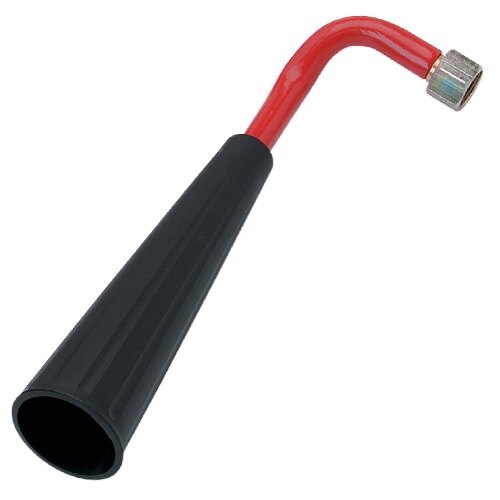-
Contact
Sales & Customer Service
0800 612 6537 support@safelincs.co.uk Live ChatDelivery Enquiries
0800 077 6149 - Resources
Fire & Safety Solutions
CALL OUR TEAM NOW 0800 612 6537
Lines open today 8am - 6pm
Free Delivery
on 100s of Products
Secure Payments
with our fast checkout
Live Customer Chat
Available Now
30 Day Accounts
for Public Sector
5 Star Customer Feedback
How to Dispose of Old Fire Extinguishers
Domestic users
Do not place pressurised extinguishers into your normal household waste, as this can be dangerous for your bin men!
If you are disposing one or two powder extinguishers, then the easiest way to do this is to drop them off at your local recycling centre.
Many foam extinguishers, particularly older units, contain the fluorosurfactant PFOA as their additive. This is known to cause cumulative environmental damage (hence the nickname "forever chemicals"). It is therefore necessary to dispose of the contents by means of a licenced waste handler and must not be discharged in any event other than a genuine fire emergency unless the run-off can be contained and legally disposed of.
Water or CO2 extinguishers can, as long as you follow our pointers below, be discharged by you and once the pressure and contents are released, they become scrap metal.
Note: Please observe the operating instructions if discharging any fire extinguisher!
Water extinguishers are the simplest to discharge, as they can be let off into an open drain.
CO2 extinguishers can also be discharged outside in an open space with the gas simply dissipating. However, please read the following warning carefully!

Warning: CO2 extinguishers can be very dangerous to discharge if they are not fitted with their frost-free horn. NEVER discharge a CO2 extinguishers without the pipe and horn being properly fitted, as this can lead to serious injury! The CO2 extinguisher is under very high pressure and operating the discharge handle without the horn being fitted creates a strong recoil that can break bones.
Powder and Foam: If you are, against our advice, adamant that you want to discharge powder and foam extinguishers yourself, here some guidance:
Whilst foam extinguishers are similar to water extinguishers, they must be discharged more carefully to avoid unwanted contamination. Firefighting foams, due to their toxic chemicals, must not be discharged to groundwater or rainwater drains and need to be discharged safely into a foul sewer.
We would not recommend that domestic users empty their foams themselves, as the foam can quickly overwhelm the capacity of eg a toilet to accept the rapidly expanding foam. The foam is also slightly toxic, so spillages should be avoided.
Whilst powder extinguishers are no longer recommended for domestic indoor use, there are still a large number of them found in houses across the UK. If you want to avoid the trip to the recycling centre, you can empty a powder extinguisher by tipping it on its head and discharging what is left in the dip tube into a fabric bag (for example the leg of a jeans with the end closed off; this will catch most of the powder while letting the pressurised air escape), but be aware that this can be messy! The powder can then be disposed of safely into your household waste.
Business users
Fire extinguishers covering public or commercial premises are commonly serviced annually, and it is during this process that expired units will most often be replaced. The service engineer on site will generally offer to take away any expired extinguishers either for a small fee, or as part of any servicing agreement in place.
There are also a selection of specialist firms which are able to collect bulk quantities of extinguishers for recycling. If you find yourself in possession of a large quantity of expired or defunct fire extinguishers, then this will often be the most cost effective solution for disposal.
So to summarise, with care it is possible to dispose a small quantity of fire extinguishers yourself, but if you have a large amount of fire extinguishers, then it is often best to engage the services of a specialist, or rely on a reputable servicing company to dispose of your extinguishers for you.
We hope the above information has been of use to you. If you have any remaining questions, or would like to arrange for a Safelincs service engineer to collect and dispose of your fire extinguishers, then please feel free to contact our dedicated team via servicing@safelincs.co.uk.
Reviewed: 03/02/2022 (doc:487 V1.1). Our articles are reviewed regularly. However, any changes made to standards or legislation following the review date will not have been considered. Please note that we provide abridged, easy-to-understand guidance. To make detailed decisions about your fire safety provisions, you might require further advice or need to consult the full standards and legislation.



























